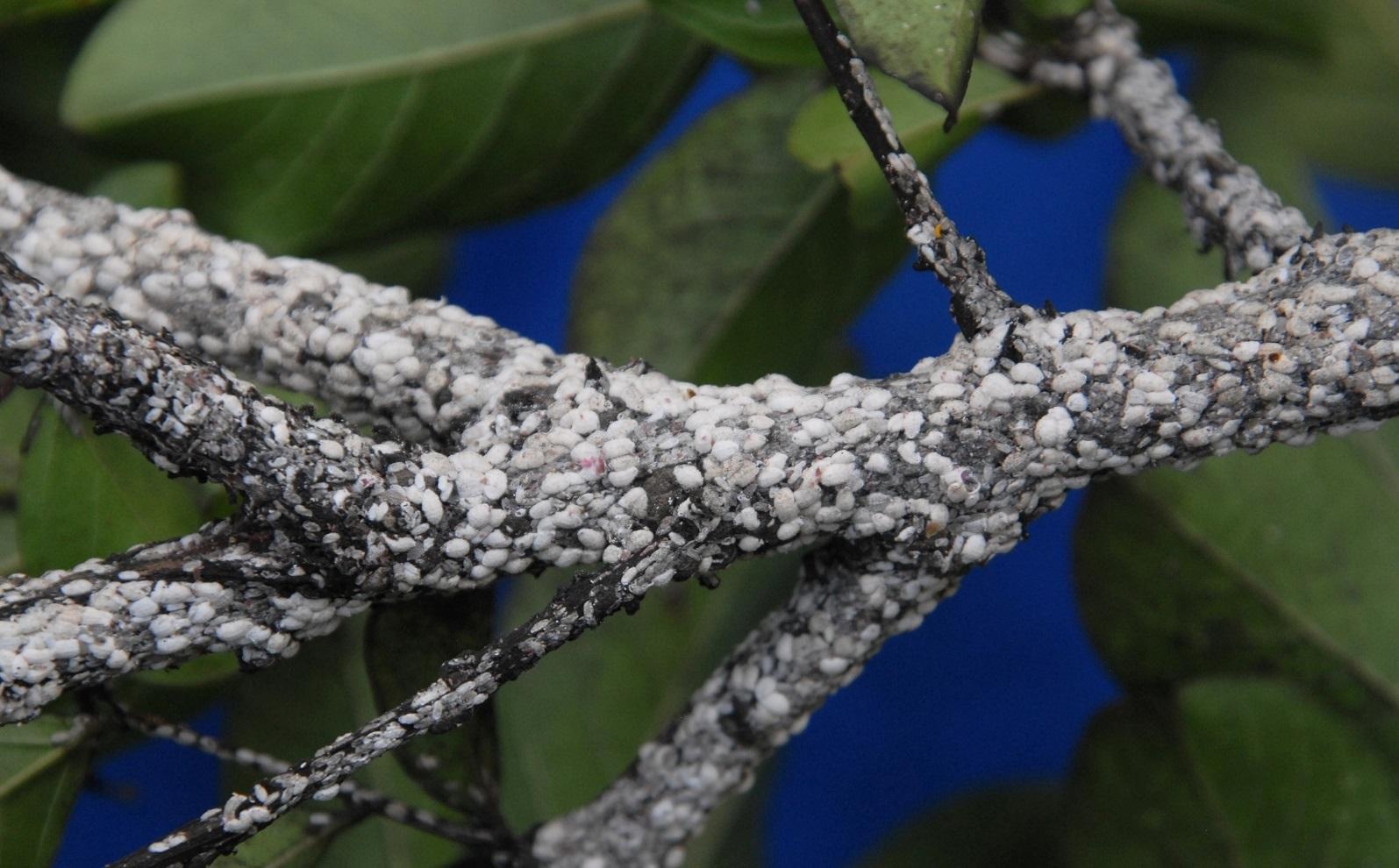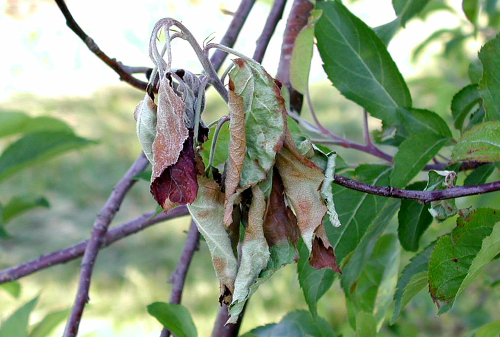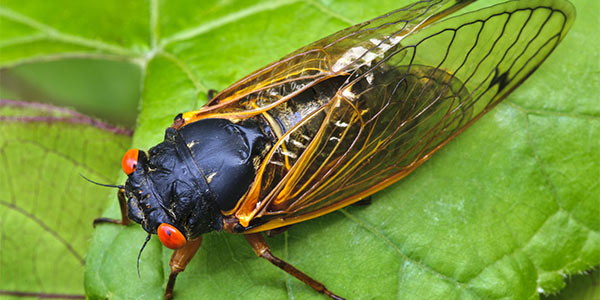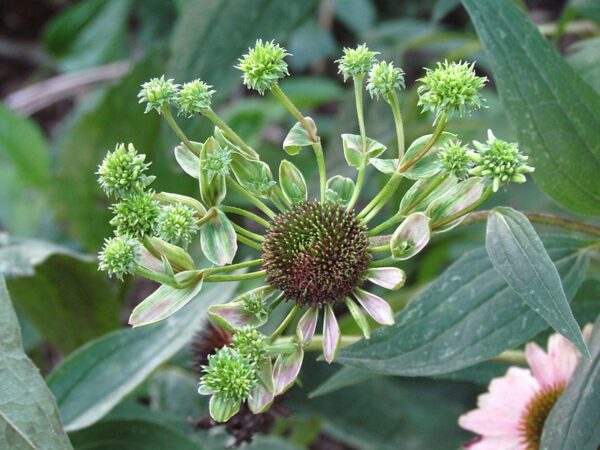Biology
The crape myrtle bark scale has three life stages: eggs, nymphs, and adults. Females lay eggs in a white or gray feltlike egg sac or ovisac. A female can lay up to 100–300 eggs. Within a week, the eggs hatch, and the first instars (earliest nymphal stage), typically referred to as crawlers, emerge from the egg sacs. Crawlers have legs and antennae and are the only mobile stage of this scale insect. Crawlers prefer cracks and crevices on the bark, and the infestation begins when crawlers settle on the bark. Once they settle, they insert their elongated tube-like mouthpart into the stem, access the phloem vessels, and begin to suck up the plant’s nutrients. The settled crawlers lose all their appendages as soon as they molt into the second nymphal stage. The nymphs are typically pinkish in color. During the season, the scale population grows and may cover the entire crape myrtle bark. They complete a life cycle within two to three months; there could be two to three generations per year. The nymphs, primarily second instars, are the overwintering stage of this scale pest.
Damage
From crawlers to gravid females, all life stages can actively feed on crape myrtle and cause serious damage. The infested trees can appear severely stunted, with dieback symptoms on the branches. With a severe infestation, the entire tree can die. When nymphs and females insert their straw-like, piercing and sucking mouthparts into the phloem, they suck up more sugars than they need, and the excess sugars are excreted as a liquid referred to as honeydew. Because this scale insect profusely produces honeydew, sooty mold fungus readily develops on the honeydew, causing the infested bark to appear black in color. However, sometimes sooty mold fungus develops on the leaves; this may not be caused by crape myrtle bark scale but instead by crape myrtle aphids. Aphids are found only on the leaves during the growing season, while the CMBS are found only on the bark.

Monitoring and management
Regular inspection of the tree bark will be necessary to detect the problem early. Double-sided tape can be wrapped around the branches to determine crawler activity (gravid females and older nymphs will not be trapped on the tape). In the Gulf states, the first peak of crawler activity is typically noticed in mid-May and the second peak in mid-October. The exact seasonal development of the scale can vary by the local temperature.
As cultural management, pruning the side branches with infestations may reduce the population size. Several predators — mostly ladybugs (Chilocorus stigma, Hyperaspis bigminata, Harmonia axyridis, and Scymnus sp.) naturally occur in the landscape and nursery, and they attack the scales and reduce the population to a certain level. Because the populations of this scale pest can build up quite rapidly in the summer months, the scales can outnumber the predators. During the early stages of infestation, physically removing the scales using a brush may temporarily help but is less likely to provide long-lasting control. Ants can be observed on the infested crape myrtle bark, but it is not clear if they function as a predator or instead tend the scales to collect honeydew.
For longer-term control, the use of insecticides is necessary. Systemic insecticides such as neonicotinoids (imidacloprid, dinotefuran, clothianidin) applied as a soil drench have proven effective. However, these systemic insecticides — especially imidacloprid — can be harmful to foraging pollinators. Insect growth regulators (e.g., pyriproxyfen) have provided effective control if applied when the crawlers are active. The crawlers are devoid of the waxy coating that protects older nymphs and adults. Horticultural oils have provided inconsistent control and are generally ineffective if not applied during the peak crawler emergence window in the spring (April or May). Carefully read the insecticide label, including the precautionary statements, before applying any insecticides. The insecticide label is the law. Contact your local county Extension Service office for the latest control recommendations.
My Comments
This has become an annual problem here in north Alabama for us. I believe it will be around for years to come until a great preventive insecticide become available or some kind of nature predator figures out it can eat these scale. They aren’t hard to control. We recommend an early dose of the imidacloprid in late February when the weather warms up. This usually takes care of the problem but you may have to apply some more in late summer or early fall. All in all this is defiantly an insect that will be around for the foreseeable future, but we can help you tackle the problem.
Here is a link to a great research paper by a girl I went to Auburn with.



